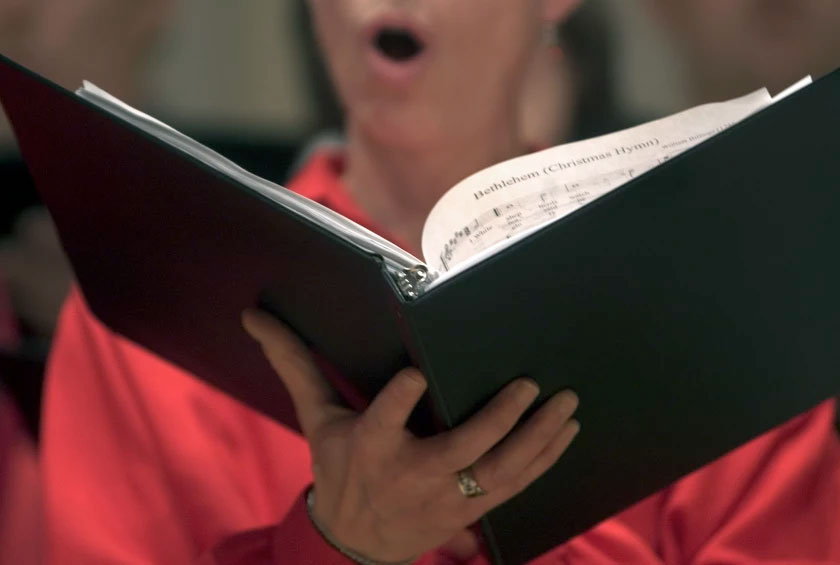
(Chris Maddaloni / CQ Roll Call via Getty Images)
![]() published in the Los Angeles Times
published in the Los Angeles Times
When I was 18 years old, I wanted to sing tenor.
I didn’t make a big deal of it when I was rejected. Those days were like the Dark Ages for gender parity. A girl singing a guy’s part? Forget it. And, as a middle child, I’d always been quick to accommodate the whims of others.
And yet, the details still sting. As a freshman walking through Harvard Yard in the fall of 1971, I spotted a flier on a bulletin board: “Want to go to the Bahamas over spring break?” Of course I did. All I’d have to do was audition to sing tenor for the Krokodiloes, Harvard’s all-male a cappella group.
When I arrived at the group’s mahogany-paneled headquarters, some preppy gatekeeper asked me what I was doing there. I said I was auditioning to sing tenor. I’d just been accepted into the university choir as an alto and hitting the notes in a slightly lower range would be a breeze. He laughed in my face and told me to get lost. In that era, there were four times as many men as women at Harvard, a ratio that taught us women — still technically admitted to Radcliffe then — to keep our mouths shut even when all we wanted to do was sing.
Fifty years later, I finally got what I wished for. That’s because my choir — the Angel City Chorale — returned to in-person rehearsals last month, all 160 of us, masked and socially distanced and singing our hearts out in a gym inside a Mormon church in West L.A. Our diverse holiday-concert repertoire includes the Hanukkah parody of “Bohemian Rhapsody,” a Spanish ode to the Virgin Mary and a bunch of Christmas singalongs, including a foot-stomping gospel number. It is thrilling to finally be together again, and the best part for me is being asked to sing tenor.
What I couldn’t have guessed all those years ago in college was the reason I’d be singing tenor now: too few men. Like other community choirs, we have way more sopranos and altos than tenors and basses. So I am helping to fill a gap.
Choral singing, of course, has long had a gender-bending history. In the mid-16th century, Italians were obsessed with the sweet, angelic voices of male singers whose range included high notes previously thought impossible for men. Their abilities, though, came at a steep price, namely castration before puberty. Known as castrati, these singers were renowned throughout Europe until the cruel practice that created them was banned in the 1800s.
Women singing tenor is a more recent phenomenon. The word tenor derives from the Latin tenere, which means “to hold”: Tenors “hold” the melody. But I guess you could also say a choir with female tenors is holding onto a belief that every voice counts.
As it turns out, my choir is big on inclusion. Not the paying-lip-service kind but the real thing. We believe that what we can do best in these divided political times is to model this: ordinary people of great diversity coming together to create something better than we could create alone.
Ranging in age from 25 to 91, we are Black, white, Asian, Latinx, Filipino, Christian, Jewish, Muslim, straight, gay, rich, poor, old, young, trans, cisgender. Not to mention Democratic and Republican, all united in common purpose, namely to promote community, one song at a time. We even had a respectable run on “America’s Got Talent” a few years back when Tyra Banks flashed the audience the Wakanda Forever salute — a reminder of Black excellence from the Marvel comics Black Panther series — as we sang “Baba Yetu,” a version of the Lord’s Prayer in Swahili. We’re a serious blend of choir nerds, and we’re proud to reflect L.A.
Altos in my choir who have switched to singing tenor, like me, are called “taltos.” The chorale’s director, Sue Fink, coined the term, but a taltos is also a figure from Hungarian mythology — someone with supernatural powers similar to a shaman.
I’ll claim that etymology. Singing tenor has become my superpower. To me, it represents all the beauty of the human soul — the healing power of music in a culture of belonging that values change, including change over time.
We know, for example, that when you hit your 60s and 70s, vocal folds weaken, cartilage in the larynx begins to ossify and respiratory systems that power voices start to work less efficiently. So, women’s voices get lower and men’s get higher. Like it or not, gender fluidity is a sort of foregone conclusion.
There are those purists who will tell you that the problem with classifying a woman in a traditionally male vocal part, or vice versa, is that range is not the main characteristic of voice type. Instead, voice type is a function of tessitura and vocal weight — a woman singing low almost always sounds like a woman singing low, not like a tenor.
That may be, but I suspect that traditionalists in this realm are not unlike romance language aficionados who accept nouns as masculine or feminine without question. Why is the moon feminine and the sun masculine? How should “tenor” sound? And where did those rules come from?
Like accepted practices about who can sing what part in a choir, I think Sam Cooke had it right: A change is gonna come. I’ve checked to see if there has ever been a woman admitted to the Krokodiloes in its 75-year history at Harvard. Not one.
Bad form. I do, however, agree with the group’s motto, Nunc Est Cantandum. “Now is the time to sing.”
Joy Horowitz is a writer who lives in Santa Monica and teaches journalism at the USC Annenberg School.
![]() published in the Los Angeles Times
published in the Los Angeles Times

